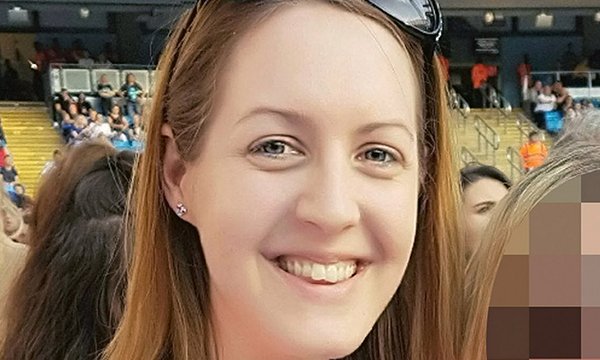Lucy Letby: colleague had ‘sleepless nights’ over incidents

A senior nurse from the neonatal unit where Lucy Letby is alleged to have murdered seven babies has recalled an unusual rash on Child D

A senior nurse had ‘sleepless nights’ over incidents on a neonatal unit where her colleague Lucy Letby is accused of murdering seven babies, a court has heard.
Senior nurse noticed unusual rash on Child D’s torso
Kathryn Percival-Calderbank recalled a night shift in which Ms Letby is said to have administered a fatal amount of air into the bloodstream of a baby girl.
The infant, referred to as Child D, experienced three collapses at the Countess of Chester Hospital in the early hours of 22 June 2015.
On the first occasion, Ms Percival-Calderbank told Manchester Crown Court she noticed an ‘unusual, mosaic-type’ rash on the girl’s torso and arms which was ‘reddy-brown’ in colour.
Child D is alleged to be the third infant murdered by the defendant in a two-week period in June 2015, with another experiencing a life-threatening collapse at the same time.
Giving evidence on 9 November behind a screen, Ms Percival-Calderbank said she had worked at the unit for newborn infants since 1993.
Child D started desaturating and her heart rate dropped
She recalled checking in on Child D while the infant’s designated nurse Caroline Oakley was on a break. She said Child D was stable and ‘seemed quite settled’.
Some time later, the witness said she returned to the intensive care room when alarms sounded.
Ms Percival-Calderbank added: ‘The baby’s monitor was showing she was desaturating and her heart rate had dropped.
‘I don’t know whether there was anyone else around at the time, but I think there may have been.’
She said she checked Child D’s head position, gave ‘gentle stimulations’ with her hand and then used a face mask to provide oxygen.
‘I was assisted by someone. I can’t clearly remember who it was. I have a feeling it might have been Lucy, but I cannot categorically say,’ she added.
Asked by prosecutor Philip Astbury if she noticed anything while assisting Child D, Ms Percival-Calderbank said: ‘There was a rash on her trunk and arms. It was on her body from the chest downwards.
‘It was not like a spotty rash. It was oval-type markings on the skin. The vessels of the blood seemed to be meeting up with each other. She was quite a pale-skinned baby, so they seemed to be pronounced browny/red.’
Defence barrister questions origins of ‘extra details’
Ben Myers KC, defending, asked if the ‘extra detail’ she had provided about the rash, compared to her police statement, was something she may have picked up in conversation at work.
Ms Percival-Calderbank replied: ‘I might have done, but it’s also my recollections which have come back. It was an odd rash. It wasn’t like a normal septic rash, it was a different type of rash.’
Mr Myers said: ‘Can you help us with how you got the extra details?’ The witness replied: ‘Because I started thinking about the events. As I was having sleepless nights I was thinking about the events that happened.’
Consultant paediatrician Dewi Evans told the court he concluded Child D – who was born 60 hours after her mother’s waters broke – had early onset pneumonia but that was not the cause of her death.
Lead prosecutor Nick Johnson KC asked: ‘If Child D’s pneumonia had been sufficient to cause her death, what would you have expected the pattern of her decline to have been?’
Dr Evans said: ‘If a baby is born with severe pneumonia, what you would find is that an increasing amount of clinical support does not lead to improvement. In Child D’s case she got better, she improved far more rapidly than I expected. She was essentially out of danger. The pneumonia was not responsible in any way for her death.’
Dr Evans said the only explanation he had for Child D’s death was from an injection of air through a vein into her circulation.
‘Full house’ of indications that Child D has been injected with air, says senior doctor
Asked by Mr Myers, defending, to explain his finding, Dr Evans said the five factors were her ‘rapid’ collapse, the skin discolouration, that resuscitation was unsuccessful, air was present in the vessels of the heart and none of the other issues affecting Child D were relevant.
He said: ‘In my opinion we had a full house of clinical characteristics of her having a sustained an air embolus – air injected into her circulation.’
Mr Myers suggested Child D was nowhere near a complete recovery. He said: ‘She still had the potential to be unwell, didn’t she?’
Dr Evans said: ‘She was in a neonatal unit, the best place on the planet. She had nurses around her, she had doctors around the corner, as it were.’
Mr Myers asked: ‘What you are doing is deliberately seeking to exclude factors which goes to show she was actually unwell?' The witness said that Child D was 'stable' and denied his findings were 'influenced by the allegations rather than the underlying facts'.
Ms Letby denies the murder of seven babies and the attempted murder of ten others at the Countess of Chester Hospital.
The trial continues.
In other news

